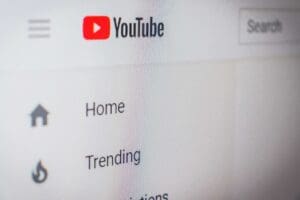
The Importance of Captions and Transcripts for YouTube Content Creators
The Importance of Captions and Transcript for YouTube Content Creators
YouTube is the social media phenomenon with 1.9 billion logged in monthly users, where more than 1 billion hours of video is watched daily and 70% of views are from mobile devices.
If you’re reading this, chances are you’re one of the millions of people that are using YouTube as a platform for your content. And why not, in January 2018, more than 90% of US internet users were YouTube viewers. Baby boomers are watching YouTube to save time, learn and keep up to date with entertainment and news and they’re not the only ones.
YouTube is home of the video tutorial, vlogs, news, entertainment and candid camera style content. Whatever you’re looking for, YouTube has a video on it. But can you find it…
Like Google, YouTube requires keywords in order to serve up relevant content to viewers. How can you make this process easier, I hear you ask?
Search Engine optimization (SEO) for YouTube
YouTube’s algorithms only crawl text, so an uncaptioned video won’t enjoy the same benefits a close captioned video will. The additional text allows YouTube to serve your content to the users that want to watch it, which is vital if growing your subscribers and increasing views is your goal (which, let’s be honest, is a huge part of content creation).
Optimizing your video is key. Like traditional SEO, YouTube bases recommendations on factors such as keywords and view time. A transcript of your video allows users to better engage and decide quickly if the content suits their needs.
You can add up to 5,000 characters in your video’s description box, so make sure you utilize this space by adding your transcript and increasing your chances of being found among all the new content that is being created and uploaded each and every day.
Increase Accessibility for All
5% of the world’s population is deaf or hearing impaired, that’s more than 400 million people than cannot consume video content without captions or transcripts. Using these tools when creating your video content opens your channel up to a wider audience and allows you to share your story with a much larger group of people.
And with 70% of YouTube videos being watched on mobile devices, we know that much of that content is being consumed during the commute to work or school or sneakily while waiting for a meeting. Adding captions allows users to silently view your content, giving them more occasions to engage.
What is Transcription?
Transcription is the converting of spoken word into simple-to-read text. Writing transcripts is the responsibility of a transcriber who trains in a specific field of typing audio into text as accurately as possible.
The transcript itself can be an exact word for word document or an edited version of the original text. Transcribers edit things out like ‘um’ and ‘ah’ that prevent clarity in the script.
What is Captioning?
Captioning is the display of audio content as text on the screen. Captions involve sound effects as well as the spoken word. Moreover, captions assist viewers with hearing impairments, deafness, or muted audio.
Take a moment to think about all the times you’ve seen captions on a Facebook video or on the news while waiting at the doctor’s office. They’re much easier to follow, aren’t they?
If you’ve considered captions for your video, but weren’t sure how to go about it, take a look at Scribblr’s easy 4 step process:
1. Upload Your Files
Upload audio or video files from your computer, safely and securely
2. We Work Our Magic
Our global team get to work captioning your content
3. Files Are Double Checked
Your captions are personally checked by our Quality Assurance Team
4. Get You Files, Fast
You receive your caption file directly in your inbox